The Fascinating History Behind Voyager One
On September 5, 1977, NASA launched the Voyager 1 space probe out of our atmosphere and into the cosmos. On track to exit the solar system and journey into the unknown, this was a mission of hope. Aboard the craft rested the Golden Record, shining in it’s case and ready to be found by extraterrestrial life. But what is the Golden Record and what’s on it? Why was it sent into space and who put it together? And how did they decide which aspects of humanity were destined to be preserved?
The following is a quick overview of the Voyager 1 mission and the Golden Record. We hope that you enjoy learning more about this fascinating piece of history, and we encourage you to keep learning even after you’ve left the theatre.
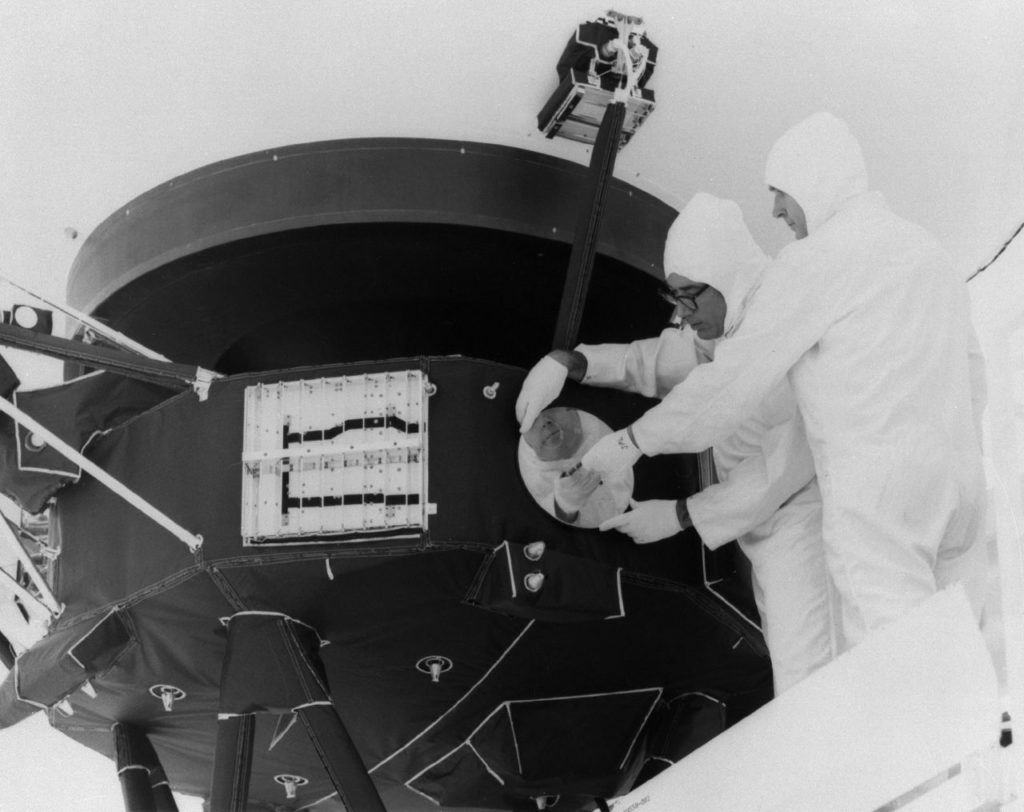
The Timeline of the Voyager 1 Mission
- 1972: The project was approved by NASA on July 1 and was originally dubbed “Mariner 11” as part of the Mariner program before being renamed as Voyager 1
- 1977: Voyager 1 was launched on September 5 from the NASA Kennedy Space Center at Cape Canaveral, FL
- 1979: On March 5 Voyager 1 completed its Jupiter flyby
- 1980: On November 12 Voyager 1 completed its Saturn flyby
- 1990: It was on Valentine’s Day that Voyager 1 took a photograph of Earth, dubbed the “Pale Blue Dot” by Carl Sagan
- 1998: Voyager 1 became the most distant human-made object from Earth on February 17, overtaking NASA’s Pioneer 10
- 2012: The space probe entered interstellar space on August 1
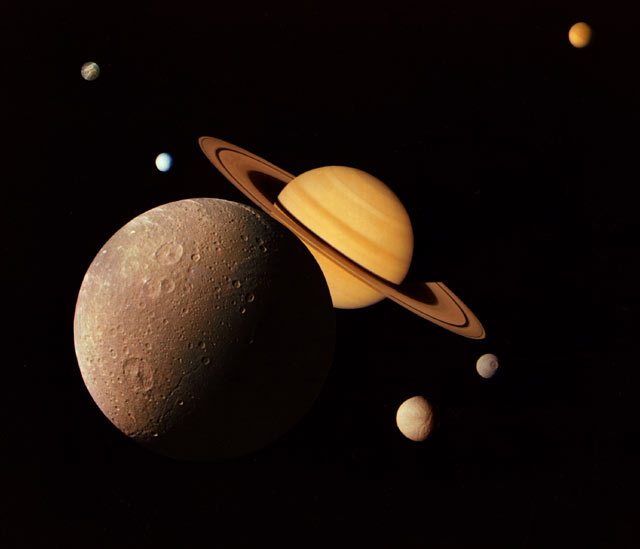
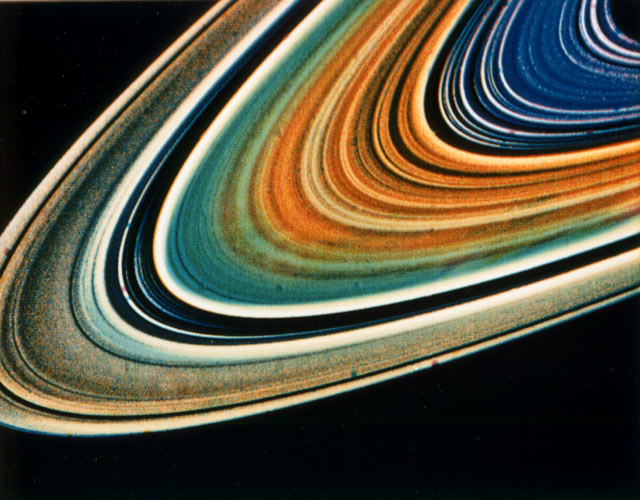
What is the Voyager 1 Mission?
The Voyager 1 probe was designed and sent by NASA on a scientific mission to analyze Jupiter, Saturn, their respective moons, and interstellar space. Armed with the ability to investigate weather, to examine magnetic fields, and to take photographs, the data acquired from Voyager 1 was hugely significant in NASA’s research of the Solar System’s outer planets. Over 44 years later, this space probe continues to travel further and further away from Earth, collecting data to this day.
But for our purposes, it is the Golden Record, safely secured to Voyager 1, that served as the inspiration for this play, and journeys on through interstellar space as a time capsule of humanity, just waiting to be discovered by alien life.
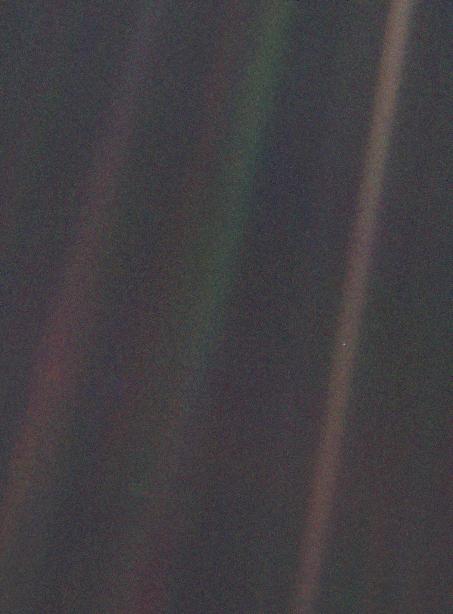
What is the Golden Record?
Yes, the Golden Record is a literal golden record. While at the time, 8-track tapes were the listening device of choice, those behind the Voyager mission worried that a message recorded on such a medium would decay long before it was ever found.
Instead, astronomer Frank Drake suggested a phonograph record, the hope being that a record would be more likely to survive the mission, and that alien life would be more likely to figure out how to use a record to play humanity’s message. Thus, the Golden Record was created, made of copper and plated in gold in order to satisfy the thermal and magnetic requirements of the Voyager 1 probe. By one estimate, the etchings on this record could last for hundreds of millions of years in interstellar space!
On the cover of the record, a message is etched in picture and diagram form, attempting to explain to alien life how they might use the record and access the contents of the time capsule. The record is encased in a protective aluminum jacket and comes paired with a cartridge and a needle. As Carl Sagan noted, “The spacecraft will be encountered and the record played only if there are advanced spacefaring civilizations in interstellar space. But the launching of this bottle into the cosmic ocean says something very hopeful about life on this planet.”
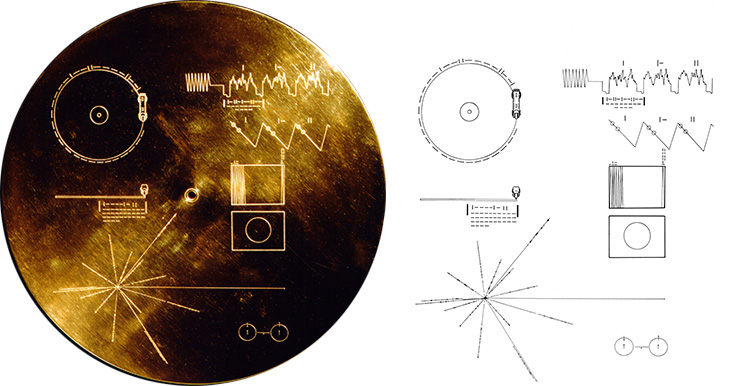
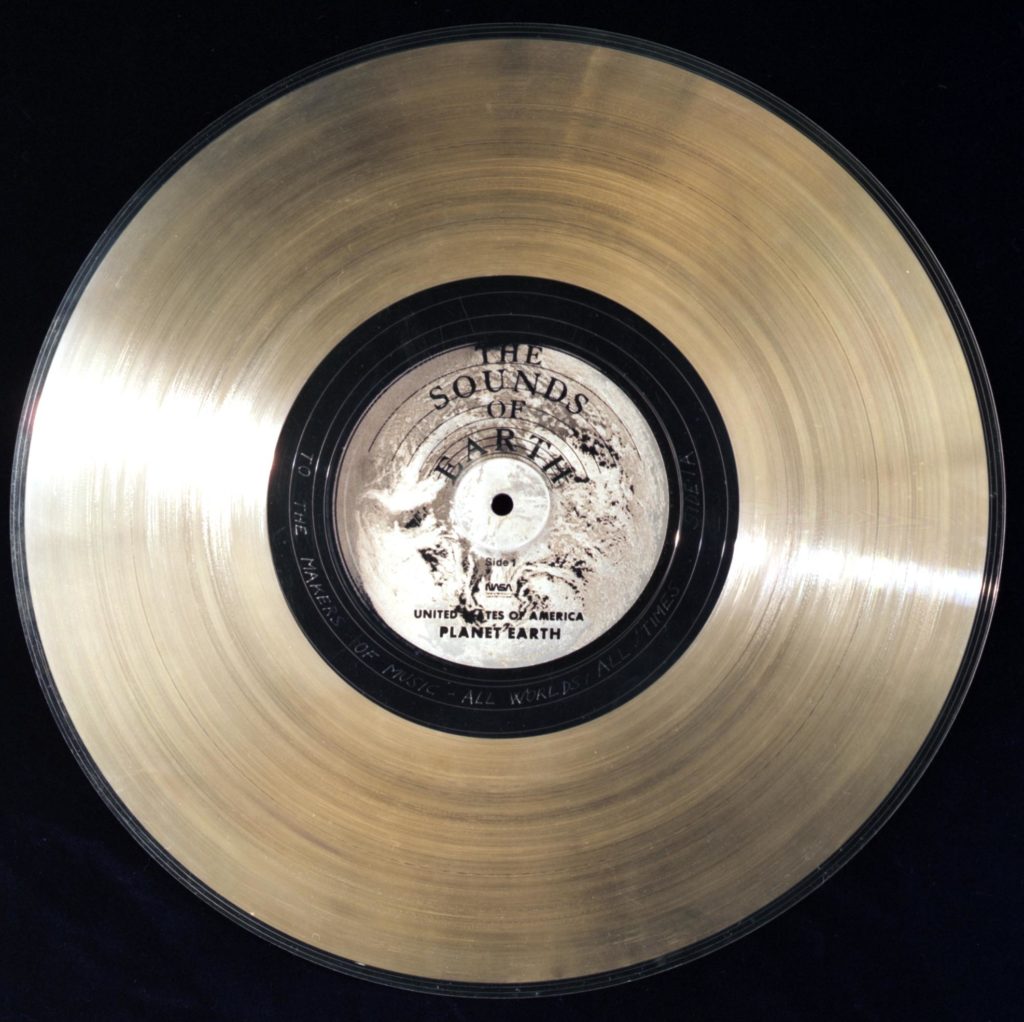
What’s On the Golden Record?
What would you do if you were tasked with creating a time capsule of humanity? What would you include for aliens to discover, and how would you even begin to narrow it down? The task is an exciting one, but also daunting in its scale.
Led by famed scientist Carl Sagan, the NASA committee behind the Golden Record spent almost a year deciding what to include in its contents. Tasked with creating a message designed to reach alien life, they had to determine what to include to capture humanity both accurately and at its best. With a limited amount of space and a seemingly endless supply of music and information to choose from, distilling humanity into this compact format was quite a tall order.
The end result? 115 images, a variety of both natural and man-made sounds, spoken greetings in 55 different modern and ancient languages, musical selections from different cultures and eras, and a message from President Jimmy Carter. We highly recommend hopping on your favorite search engine when you get home, and looking up the contents of the Golden Record. You can listen to the music and peruse the “Sounds of Earth” from the comfort of your own home!
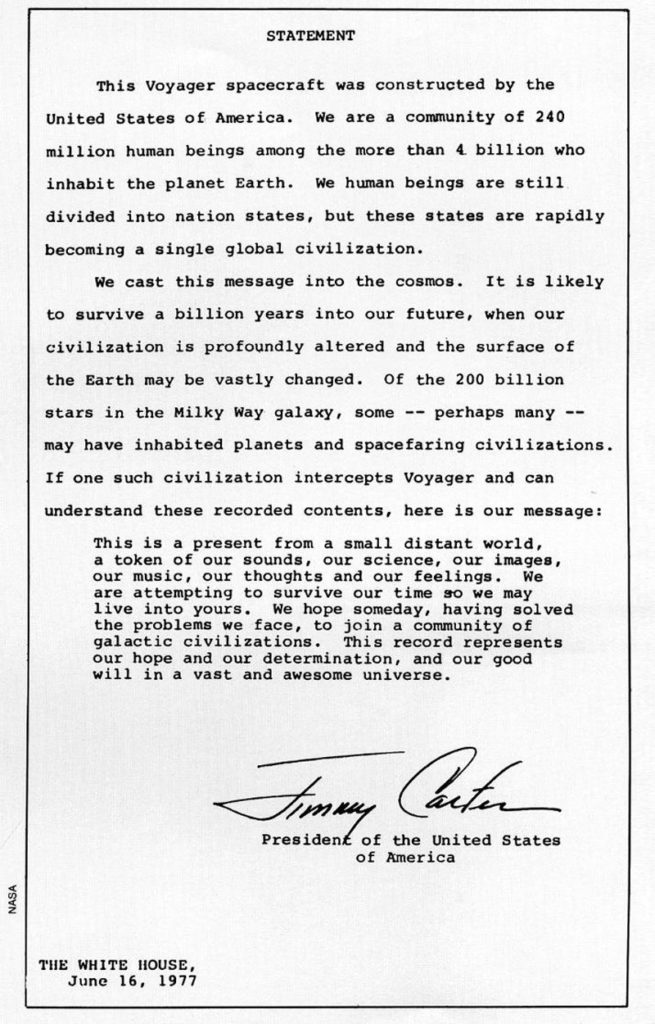
Golden Record Fun Facts!
- The only rock and roll song included on the Golden Record is “Johnny B. Goode” by Chuck Berry.
- Carl Sagan originally wanted to include a Beatles song on the Golden Record, specifically “Here Comes the Sun”, and the world-famous band was in favor of this choice, but the committee was unable to secure the rights.
- One of the greetings on the Golden Record was recorded by Carl Sagan’s son Nick who was 6 years old at the time.
- Carl Sagan’s laugh is also included on the Golden Record as a “Sound of Earth”.
- Other “Sounds of Earth” include footsteps, volcanoes, various animal noises, Morse code, a train, a kiss, and many others, both naturally occurring and man-made.
- The Golden Record also carries an hour-long recording of the brainwaves of Ann Druyan, Creative Director of the Golden Record. During the recording of her brainwaves, she thought of many topics, including Earth’s history, civilizations and the problems they face, and what it was like to fall in love. At the time, Ann Druyan and Carl Sagan were in fact falling in love with each other, and eventually married after working together to create the Golden Record. Their love is now preserved on the Voyager 1 space probe, lightyears from Earth, and decades after their romance began.
- Jimmy Lovine, who was still early in his career as a music producer, served as Sound Engineer for the project at the recommendation of John Lennon, who was contacted to contribute but was unable to take part.
- Science fiction author Arthur C. Clarke recommended that a plaque be put on Voyager 1 that should read: “Please let me alone, let me go to the stars.”
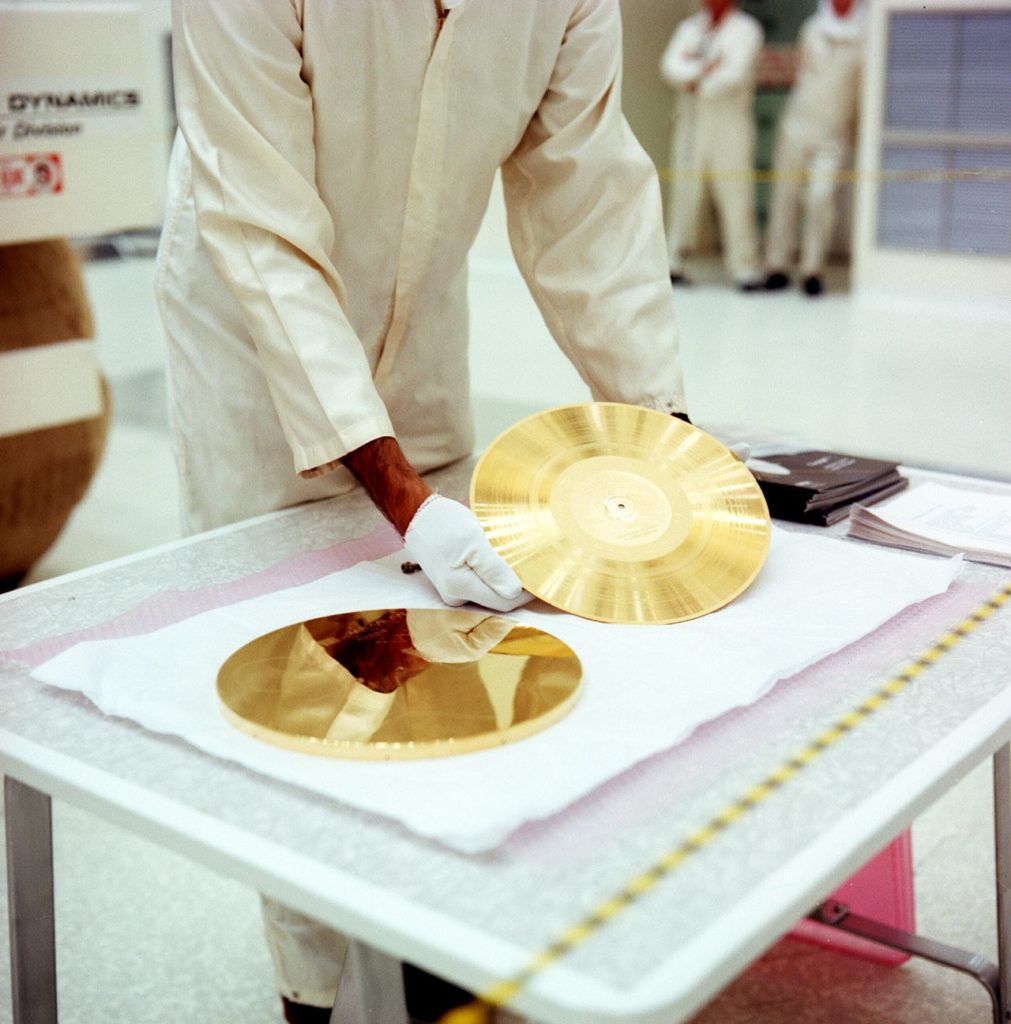
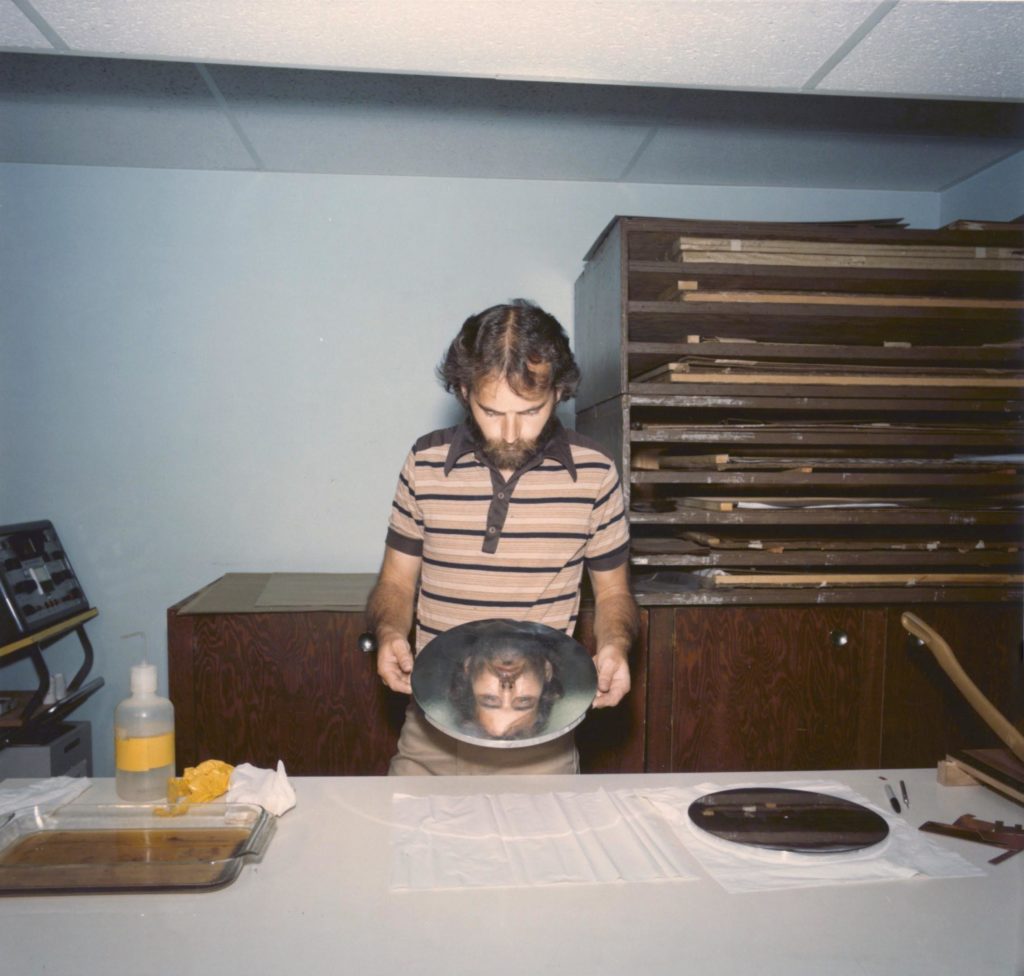
Carl Sagan’s Thoughts On the Golden Record
“I was delighted with the suggestion of sending a record for a different reason: we could send music. Our previous messages had contained information about what we perceive and how we think. But there is much more to human beings than perceiving and thinking. We are feeling creatures. However, our emotional life is more difficult to communicate, particularly to beings of very different biological make-up. Music, it seemed to me, was at least a creditable attempt to convey human emotions. Perhaps a sufficiently advanced civilization would have made an inventory of the music of species on many planets, and by comparing our music with such a library, might be able to deduce a great deal about us.” -Carl Sagan
“One thing would be clear about us: no one sends such a message on such a journey, to other worlds and beings, without a positive passion for the future. For all the possible vagaries of the message, they could be sure that we were a species endowed with hope and perseverance, at least a little intelligence, substantial generosity and a palpable zest to make contact with the cosmos.” -Carl Sagan
“Billions of years from now our sun, then a distended red giant star, will have reduced Earth to a charred cinder. But the Voyager record will still be largely intact, in some other remote region of the Milky Way galaxy, preserving a murmur of an ancient civilization that once flourished — perhaps before moving on to greater deeds and other worlds — on the distant planet Earth.” -Carl Sagan
